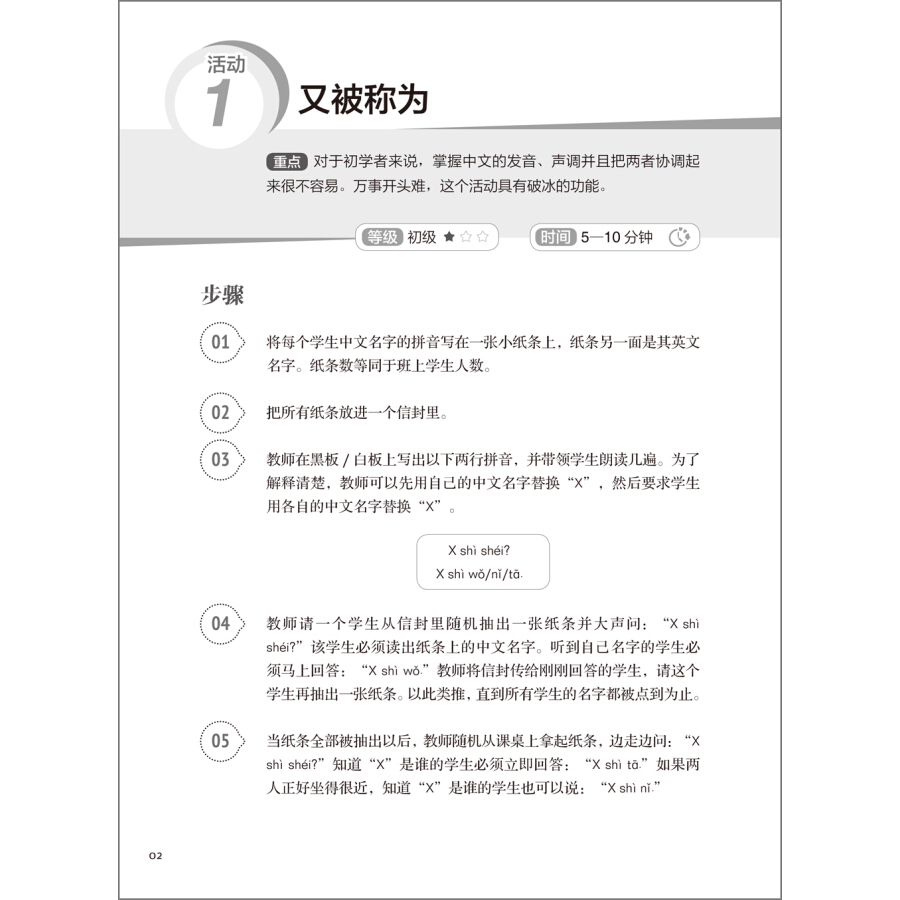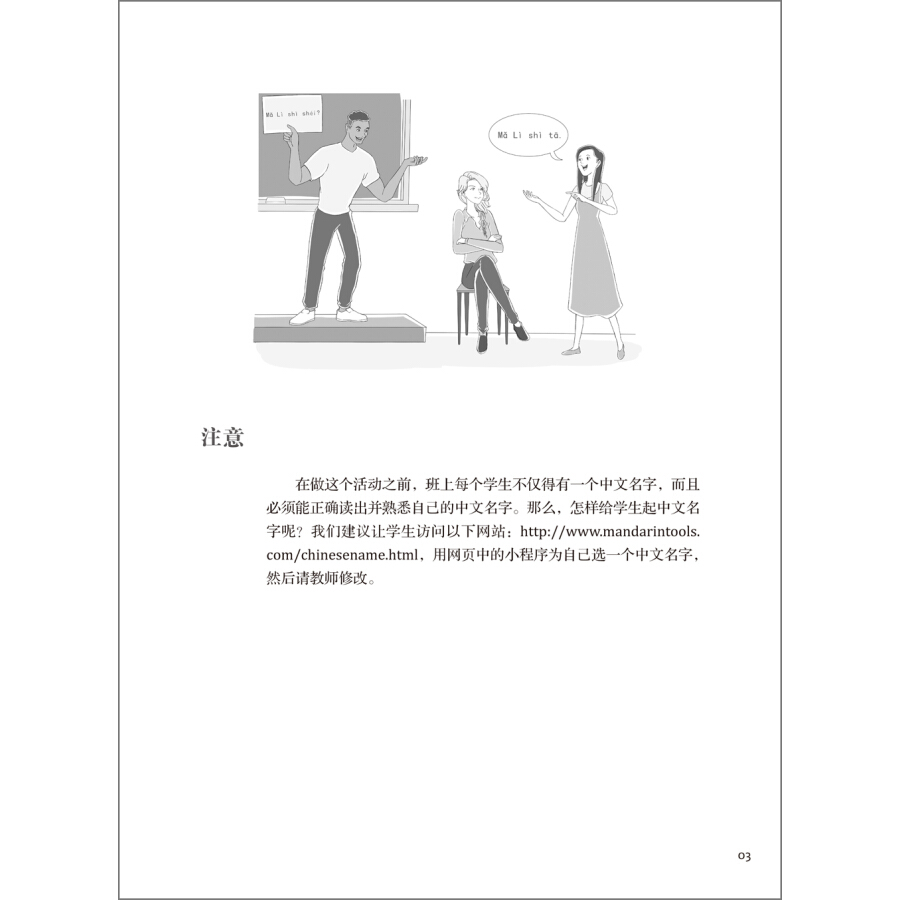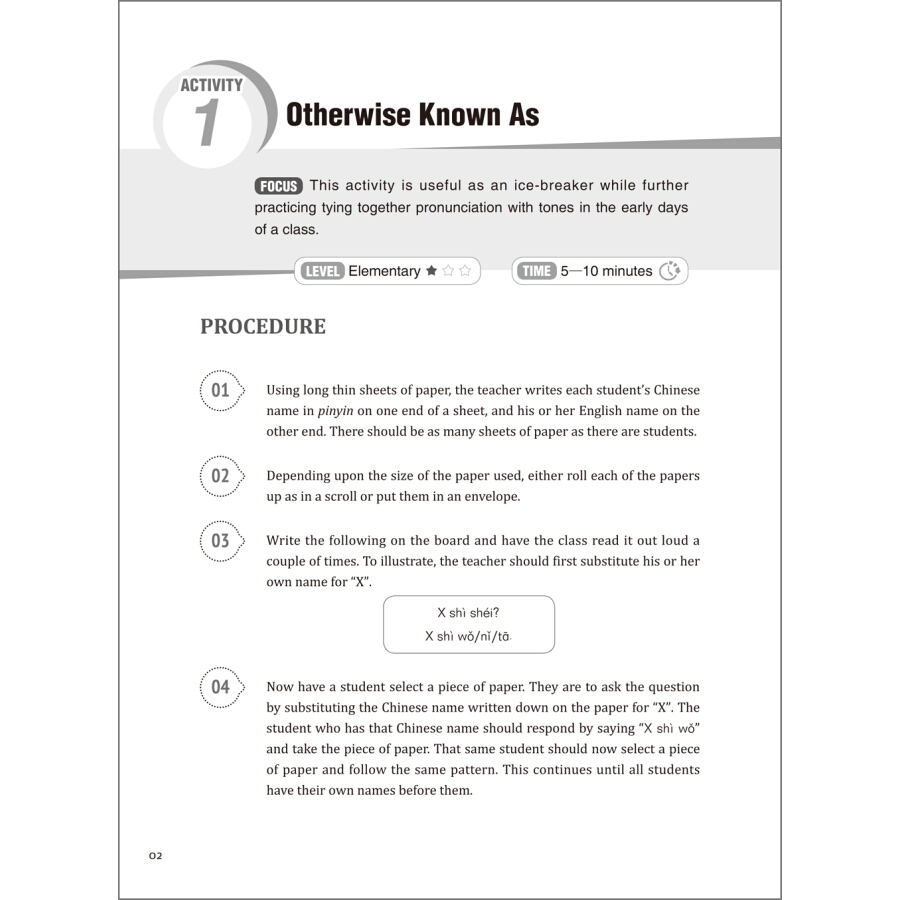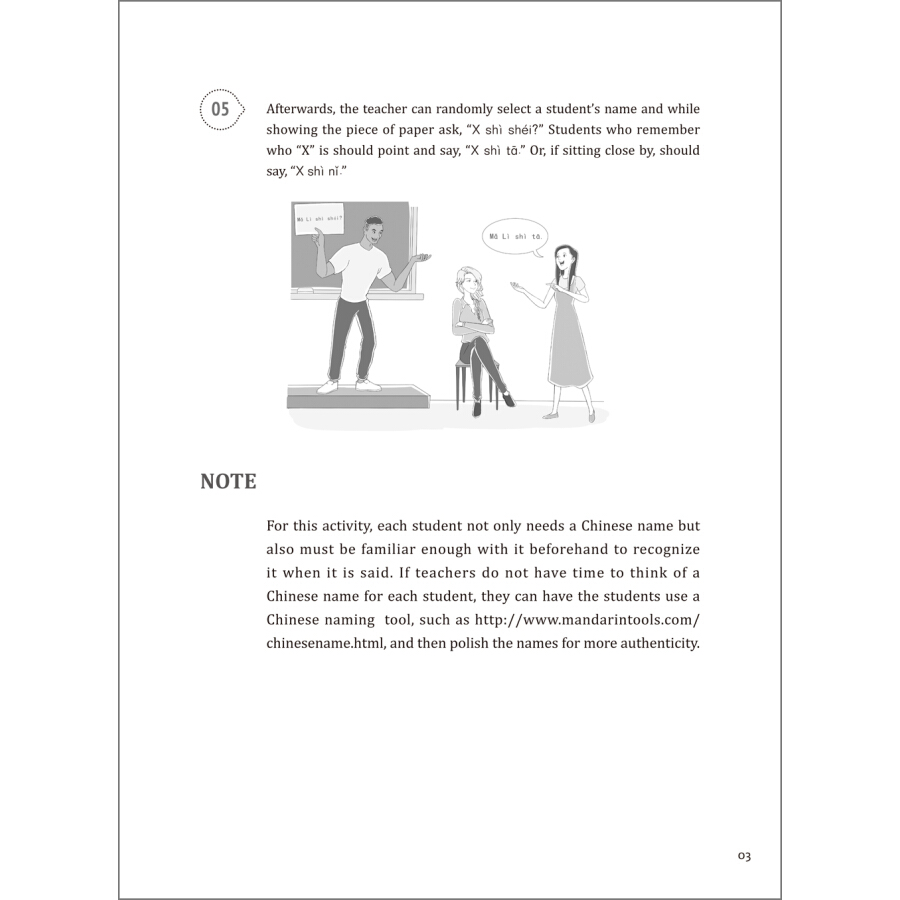



Introduction
50 Activities for the International Chinese Classroom presents an innovative approach to the learning of Chinese along the lines of Communicative Language Teaching (CLT). The ideas of CLT—creating a friendly and supportive student-centered learning environment with meaningful contexts in order to develop communicative competence—have been widely implemented in the teaching of mainstream foreign languages, but less enthusiastically or even reluctantly used in Chinese teaching. Therefore, promoting communicative Chinese teaching through activities is the first goal of this book.
All foreign language teachers must face the following challenges: arousing learners’ interest, motivating students to learn, and helping them retain what has been learned. Chinese language teachers, however, are faced with an additional challenge—the difficulty of the language itself. What can we teachers do to make learning Chinese less of a struggle and more of a gratifying adventure for our students? And since far too many Chinese language learners give up on their studies, how can we maintain students’ interest throughout the long journey to communicative competence? This book is aimed at addressing these questions practically by providing meaningful and engaging classroom activities that specifically target the unique linguistic features of Chinese which pose such a challenge for English-speaking learners; for instance, tones, characters, unique grammatical structures, etc. Our rationale, based on current cognitive research, is three-fold.
? Spaced-Repetition
Just as cramming does not work for students in the long-term, neither does it work if it is the teacher who is doing the “cramming” in the classroom. Covering material in a concentrated fashion hoping that mastery will ensue is counter-productive. To truly learn, our brains need both a rest period of non-exposure, and then need to be called upon later to recall. In other words, the brain needs practice retrieving partially learned material before it can be truly considered mastered. While the ideal amount of time in between recall sessions varies depending upon the circumstances and individual, teachers should plan on spacing out their coverage of certain topics over time. As learning is not accomplished in one fell swoop, activities are a needed addition to formal teaching, exercises, and testing. For the purpose of spaced-repetition, we have created two different activities for each particular linguistic item.
? Variety Is the Spice of Life—and Learning
With spaced-repetition being so important, variety becomes necessary. Asking for recall in different contexts makes learning more memorable and thus more effective. Variety is also necessary because as we all know what works for one student may not work as well for another. This is also true for teachers. While many teachers will have excellent results with competitive games, other teachers might struggle to get the students engaged if they themselves see games as silly time-wasters. In order to be an effective teacher, one must be true to one’s personality. Using a medley of different types of activities thus substantially increases the odds of successful teaching and learning.
? Supportive Learning Environment
And on that note, personalities matter in any classroom, but perhaps no more so than in the foreign-language classroom. Since language is the means by which we all express ourselves, egos tend to be fragile when faced with the inability to be our true selves. By their very nature, activities create a supportive, convivial classroom atmosphere which increases the intrinsic motivation of students so they are more apt to carry on in their studies. We see this book being used in several ways. First, teachers can simply use the activities in their own classrooms as is. Knowing how preparation and small details dictate an activity’s success or failure, care has been taken to illustrate the procedures step-by-step. Second, we hope that these activities will inspire teachers to develop or improve upon their own activities. As teachers, we can all use some new tricks of the trade to keep things fresh for ourselves and our students. And, thirdly, the activities can be used as an emergency remedy. Let’s say you or a previous teacher has taught your students the bɑ structure, but one day you notice that the students seem rusty. That would be an excellent time to look for an activity to bring that structure back to the forefront of their brains.
All in all, it is the authors’ hope that Chinese language teachers—from novice to experienced—find this book a handy and effective tool in their teaching toolbox.
The Authors
Seton Hall University
February, 2016